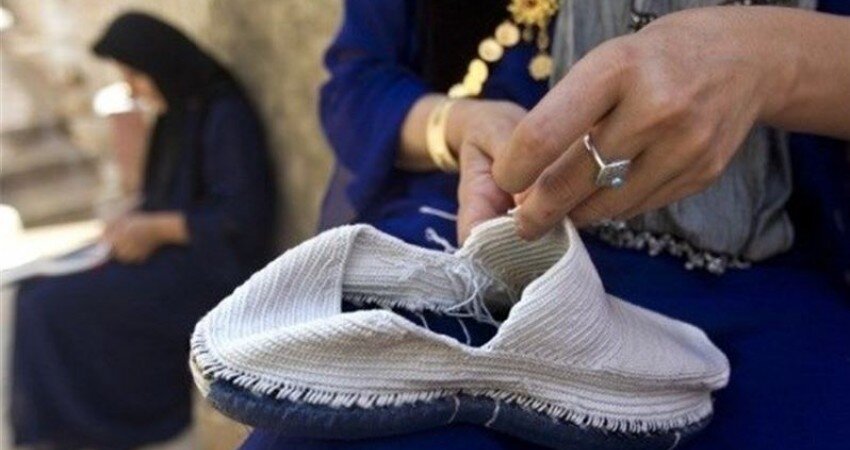Inmates attend craft course to take on new job

TEHRAN – A training course in the field of Giveh-bafi, traditional Iranian footwear, is currently being held in the central prison of Zanjan, the deputy provincial tourism chief has announced.
Due to the proper support for the production of this handmade product in this region, it is hoped that in the future, the inmates will be among the giveh producers in the province as a result of holding these workshops in male and female prisons, Elnaz Khodaifard said on Saturday.
In addition to providing employment, this free workshop will provide an income source for the prisoners, the official added.
Due to the outbreak of the coronavirus, the course is being held following strict health protocols and social distancing rules, she noted.
Back in August, the official announced that prisons across the northwestern province have offered handicraft training courses in a bid to empower the inmates.
The courses consisted of practical workshops in the fields of leatherwork, traditional jewelry, as well as cutting precious and semi-precious stones, she explained.
The courses, which have been held by the experienced handicrafts masters, are also intended to generate employment for inmates in the post-prison period and become a source of income for them, the official mentioned.
This traditional footwear, which is produced in the Iranian plateau for millennia, is very light and durable. However, it was more common in the past and was worn by farmers and villagers. This clothing has very unique features. For example, it is highly suitable for arid and mountainous climates, it is very light which decreases the sweating of the feet. It does not have a left foot or right foot, both of them are the same. These features have given the footwear international popularity and made it a unique product.
The upper part of Giveh is usually made from cotton yarn, while the sole is made of textile, leather, or plastic. Making the upper is completely done by women in their homes. They sew the upper using a kind of needle that is called “Javaldooz”. But it is men that make the soles because it needs more strength. This part is usually done in workshops.
In the past, giveh did not have specific sizes, but they were made in 3 general sizes of small, medium, and large. They are most commonly white. However, sometimes the craftsman makes them in colors like blue, red, or black based on his own taste or at the request of the buyer.
Tourism ministry helps empower inmates
In October 2020, the Ministry of Cultural Heritage, Tourism, and Handicrafts signed a memorandum of understanding with the Prisons, Security, and Corrective Measures Organization to create jobs and make income for prisoners.
The MOU also aimed at implementing special educational and promotional programs, identifying talented prisoners, and improving their social status.
The deputy tourism minister Pouya Mahmoudian said that handicraft products made by prisoners have been displayed in various exhibitions, and the income generated from selling these products has been returned to the prisoners and their families.
ABU/AFM
